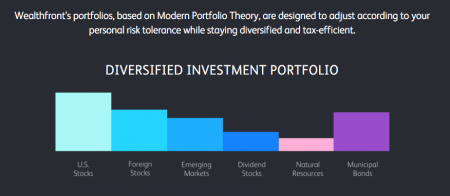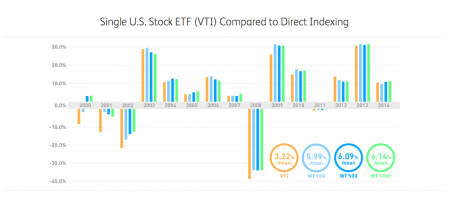Transferring money abroad can be costly, both in time and money. Banks often require you to visit a branch and fill out forms to send a wire transfer. Plus, the average cost can be high. But your bank isn’t the only place to go. Many money transfer providers let you send funds online more quickly — and for less money — than banks.
Devin Lasker, the New Jersey-based founder of an app for small businesses called Push Pigeon, needed to send money to some of his staff in India. He used TransferWise, a fast-growing, United Kingdom-based company, specifically because he could do transfers online.
“If I had to go somewhere physically, I don’t think I would’ve used the service,” he says.
If you’re ready to make sending money more convenient, check out our list of money transfer providers.
>>MORE: Want to see transfers in the U.S.? See our post Best Ways to Send Money to Individuals.
Xoom: Most Convenient Delivery Options
Xoom, established in 2001 and recently bought by PayPal, makes it easy to send money to 41 countries. On its website and mobile app, you can set up transfers and know how much it’ll cost to send the desired amount, including the upfront fee and the exchange rate Xoom sets. You can also determine payment options, such as using a bank account, debit or credit card. The maximum you can send is $2,999.
Xoom stands out as one of the best online providers for delivery options. In addition to being able to transmit money in either U.S. dollars or foreign currency, you can have money sent to a bank account or, in some countries, a cash pickup location like a major bank or retail store. In a limited number of areas, you can also reload a balance onto mobile phones, pay bills with local utility companies directly through Xoom or choose cash delivery directly to a home address (in the Philippines and Vietnam).
Being able to send money quickly, especially with cash pickup, requires Xoom to work directly with financial institutions and other partners in every country where it operates.
“That’s why remittances are hard. You have to send money to get picked up in cash — and cash instantly,” says Theresa Pasinosky, senior director of global marketing at Xoom. Remittances refer to personal transfers, including ones to the families of immigrants, and Xoom aims to make them easier to receive with cash pickup. “It’s a needed service,” Pasinosky says.
TransferWise: Most Convenient User Experience
TransferWise’s Web and mobile apps are among the easiest to use for sending money. You can use the calculator on its homepage to see the fees and exchange rates for sending up to $1 million in at least 35 currencies. Its exchange rates are at mid-market rates, which are the exchange rates that big banks use to send funds to each other. The site also provides a graph showing the change in the exchange rate over the last 30 days in the currency you’re sending.
“The original mission of the two founders was to eradicate the hidden [currency conversion] fee,” says Joe Cross, general U.S. manager of TransferWise in New York.
When you sign up online, you can log in with a Google or Facebook account, making the process much easier than a bank application. TransferWise specializes in international transfers between bank accounts, so you and your recipient need to have accounts to use this service. Once you send money, it can arrive within a few business days.
Western Union: Most Convenient for Less Popular Currencies
Although it doesn’t have the lowest fees, Western Union is a standard for online money transfers for other reasons. Its online calculator shows the estimated costs for sending to over 200 countries, a number no other provider can match. In addition, you can select from multiple payment methods (bank account, credit card or debit card) and delivery options (cash pickup or bank deposit). Transfers can be instant or take up to nine business days, depending on payment and delivery. As a rule, the faster the transfer, the higher the cost. There’s a limit of $500 when using Western Union’s website, though it offers another service called
Western Union FX for higher amounts.
Part of Western Union’s mission is “facilitating financial inclusion in emerging countries around the world,” said Hikmet Ersek, Western Union’s president and CEO, in a press release this month. In January 2016 the company reached a milestone: It now connects to over 1 billion bank accounts worldwide.
USForex: Most Convenient for Large Transfers
USForex, an online currency brokerage under the global company OzForex Group, focuses on sending large transfers cheaply. There’s no upfront fee for transferring more than $5,000, and exchange rates are below mid-market rates. You can make transfers on USForex’s website at anytime and view its
table of rates, which is updated in real time, and compare them to daily mid-market rates. Moreover, you can sign up for email alerts so you know when a specific currency’s rates drop. Transfers take at least one business day for delivery.
Using an online provider lets you make money transfers from the convenience of your home or office. You can save on costs and say goodbye to bank lines.
Spencer Tierney is a staff writer at NerdWallet, a personal finance website. Email: spencer@nerdwallet.com. Twitter:@SpencerNerd.
Methodology for International Transfers
To determine the best money transfer services, we compared 23 providers by fees, delivery speeds, security, number of supported currencies, number of physical locations worldwide and estimated foreign exchange spreads. Priority went to the ones with a combination of the lowest fees, fastest delivery, security measures, most supported currencies and smallest foreign exchange spreads. We excluded services that don’t work in the U.S.
In assessing spreads, we looked at transfers from the U.S. to five countries: India, China, the Philippines, Mexico and France. These are the five countries that receive the biggest amount of “remittances,” or personal transfers that include money sent home by immigrants, based on the most recent data from The World Bank. We compared rates on providers’ websites with the foreign exchange rates at 4:30 p.m. PST on Jan. 21, 2016, considering real-time currency data from Google, Bloomberg and Yahoo Finance.
Money transfer providers surveyed: Currencies Direct, CurrencyTransfer, MoneyCorp, MoneyGram, PayPal, Payza, Remitly, Ria, Sharemoney, TorFX, Transfast, TransferWise, Travelex, USForex, Venstar Xchange, Viamericas, Walmart, Wells Fargo (ExpressSend), Western Union, World First, WorldRemit, XE and Xoom.

















